Articles of 2006
There was nothing punk about Tom Sharkey
A few years ago an outfit called “TKO Records” in San Francisco put out a compilation of punk rock songs by such bands as the “Dropkick Murphys,” “Swingin’ Udders,” and “Electric Frankensteins.” I never heard of any of them, and if there is a merciful God, I never will again.
But I bought the item because on the cover was the striking image of one of the toughest fighters in boxing history, and I couldn’t believe that Sailor Tom Sharkey’s fearsome mug had been so cruelly and ignorantly appropriated by slobs so infatuated with their own brain damage that they entitled their CD “Punch Drunk.”
Thomas Joseph Sharkey deserves better than to end up a poster boy for brain-dead punk rockers. So it was good to hear that writer Greg Lewis of Wales and his wife, a distant relative of Sailor Tom’s, are at work on a full-length biography of the late 19th century heavyweight whose “ring courage will be a lasting memorial in the history of boxing.”
That’s what the Helms Athletic Foundation put on the medallion it presented to Sharkey in 1945.
Sharkey’s 25-round heavyweight title fight with James J. Jeffries on November 1, 1899, was “probably the fiercest fight that the American fight-going public ever witnessed,” the New York Times said at the time. It may still be true. By most accounts Sharkey won at least 18 of the 25 rounds; but Jeffries got the decision.
Born in Dundalk, Ireland, on November 16, 1873, Sharkey ran away from home at the age of 12. For several years he worked on ships hauling cargo around the world. “You can figure the life,” he said later. “There was hardly a week that I was not in a fight.” Shipwrecked four times, once Sharkey and his shipmates spent three days drifting in the Pacific Ocean with neither food nor drink.
After seven years of that, Sharkey went to New York City and became a blacksmith, which helped account for the armor of solid muscle he wore in the ring. Just 5’8 1/2” tall, Sharkey weighed about 180 when he fought the 225-pound Jeffries; and he scaled even lower against other heavyweight giants of his era. He was just 173 when he knocked out Kid McCoy in 1899. He had 17 pounds on McCoy, but the New York Times noted that Sharkey’s “massive chest standing out prominently like a gigantic pair of bellows looked almost twice as large as that of an ordinary man, and tapered down at the waist to a circumference even smaller than that of his opponent.”
The famous Sharkey chest measured 44 3/4-inches (Jeffries, one of the brawniest heavyweight champs and over four inches taller than Sharkey, had a 43 1/2-inch chest). As if it needed further attention called to it, Sailor Tom had his chest decorated with a tattoo of a four-masted schooner. “I’ll never give up the ship!” he boasted before fights.
At 19 he joined the U.S. Navy. He shipped out on the USS Philadelphia. When it docked in Hawaii in 1893, Sharkey turned professional and scored 17 straight KOs.
According to old-time sportswriter Donald Barr Chidsey, Sharkey “didn’t know how to box. He would just put his head down and wade in, hooking terrifically.”
After an eight-round draw with Joe Choynski in 1896, Sharkey met heavyweight champion James J. Corbett in San Francisco. Corbett hadn’t trained for the four-round bout, and just before entering the ring put away a big meal and some wine. Sharkey was supposed to be dessert, but after the second round he began to wrestle the exhausted champion around and even tossed Corbett to the mat. Then Sharkey threw referee Frank Carr on top of him. When the bell ended the bout, the cops had to use nightsticks to get Sharkey off the champion. The decision was a draw.
Sharkey’s next fight was against Bob Fitzsimmons, who would take Corbett’s belt in 1897. He knocked Tom out in the eighth round, but ex-gunfighter Wyatt Earp, the referee, ruled that Fitz’s punch was south of the border and gave the win to Sharkey. That one will be debated forever.
In 1898, The Milwaukee Journal said that while Sharkey “has shown himself to be a rough and tumble fighter of ability … if he hopes to get on he certainly must change the foul methods which have characterized his work in all of his fights. It is very probable that he will never be able to fight strictly within the Marquis of Queensbury rules, and he is likely to lose important battles through his foul tactics.”
Sharkey lost a 20-round decision to Jeffries in San Francisco, then knocked out Gus Ruhlin and beat Corbett on a disqualification when one of Jim’s seconds entered the ring as Corbett was taking a beating.
Kid McCoy knocked Sharkey down three times in the first round, but Tom came back to put him out in the tenth round of what the New York Times called “the most satisfactory heavyweight fight that has taken place in many years in this country.”
But that was nothing compared to the second Jeffries fight. For one hour and 40 minutes, they whaled away at one another. “Never has there been such a struggle,” reported The Milwaukee Journal, “and it was a struggle far more than a glove fight. Before it was half over, both men were covered with blood and their massive bodies were battered and swollen.”
Sharkey was the aggressor for most of the fight, but after Jeffries “stood for 21 rounds taking the punishment of the best man in the world who could be found to go against him,” said the Journal, “he turned in and with a speed and strength that were a great surprise proceeded to administer such punishment no other man in the ring except Sharkey could have received and retained consciousness.”
Sailor Tom called referee George Siler’s verdict for Jeffries “the rankest kind of robbery,” and he wasn’t the only one who thought so. “…Nine out of 10 persons in the arena were convinced that Sharkey had won the bout and the title,” wrote Charles F. Mathison in The Ring magazine three decades later. “The soft-hearted Siler decided it would be cruel to declare the titleholder beaten when he was on his feet at the conclusion of the 25th round. Jeff had been outpointed in 18 of the 25 rounds, but that meant nothing to the referee, who apparently was there to see that Jeff kept his championship unless he was carried out of the ring on a stretcher.”
[In its July, 1944 number, The Ring ran a piece about the fight (“99 Minutes of Hell”) that included verbatim a ringside account of the Jeffries-Sharkey bout written for the Detroit Free Press. According to the author, “Sharkey lost the honors, but not until he had forced his opponent to fight a marvelous battle and was in no way disgraced by the outcome. But lose the fight he did… In the writer’s opinion, no other decision could have been rendered, despite the big points advantage Sharkey had gained in the early rounds. The condition of the men at the finish testified to the correctness of the verdict.” The reporter’s name was … Charles F. Mathison. Go figure.]
For his part, Siler asked how the guy who “quit the ring with several ribs broken, his shoulder dislocated, his left ear split and three times its natural size, his nose cut and swollen, his face terribly battered, and, furthermore, (who) had to be taken away in a carriage,” could be considered the winner.
For whatever its worth, nobody except Muhammad Ali said that Joe Frazier lost their first fight because Frazier had to go to the hospital afterwards.
Sharkey’s worst injury was to his left side. “Two ribs had been crushed,” reported The Milwaukee Journal the day after the fight. Chuck Burroughs, a onetime boxer who later wrote a book called “Come Out Fighting,” met Sharkey in 1934, and said he personally saw “four little white scars as big as kitchen matches” caused by the broken ribs actually poking through his skin.
In spite of that, 10 days after the fight, Sharkey participated in a secret re-enactment of the 25th round for motion pictures. Jeff’s manager, Bill Brady, donned a fake mustache and appeared as George Siler, because Sharkey threatened to toss the referee in the Atlantic Ocean the next time he saw him.
Not surprisingly, Sharkey was never the same. Gus Ruhlin stopped him, and Fitzsimmons got even for the fiasco in Frisco by knocking Sharkey out in two. Not even Wyatt Earp could have saved Tom in that one, but the old gunfighter would’ve come in handy when Sharkey knocked Mexican Pete Everett down in the first round of their 1901 fight in Colorado. The referee disqualified Sharkey, and when Tom stormed at him in protest the ref pulled a gun from inside his shirt and the debate was over. Fitzsimmons would’ve loved it.
After he hung up his gloves, Sharkey did some wrestling and opened a saloon in New York City. But his joint became a hangout for underworld types and roughnecks like the proprietor himself (“Surly Sharkey partisans who believed that the owner had really defeated Jim Jeffries … and was champion of everything, and were always willing to take on anybody who denied it” — Kid McCoy biographer Robert Cantwell), and the cops shut it down and put Tom in jail for a month. When he got out he opened another saloon.
Corbett said that Sharkey “never spends a quarter without biting it in the hope that it will return to him,” and there were a million stories to back it up. On his 41st birthday, The Milwaukee Journal marked the occasion with a big story headlined, “Tom Sharkey, Champion Tightwad of the World, Celebrates Birthday Today; To Give Drinks to All Who Pay For Them.”
But he liked to gamble, and rode his own stable of race horses into bankruptcy in 1916. He moved to San Francisco and scraped by working as a horse track guard and was even a carnival strongman. When he and Jeffries were in their 50s, they reenacted their famous fight for vaudeville crowds and became best friends.
In his 70s, Sharkey worked as a warehouse guard and was called the “Mayor of Fourth St.” by people who enjoyed hearing him denigrate the heavyweights of that time as unfit to be sparring partners for him and his bunch.
He died on April 17, 1953. “All I can say,” he’d written years before, “is that when the champions got through with Mrs. Sharkey’s little boy Tom, they knew they had been in a fight.”
Too bad he isn’t around now to give some sniveling punks a painful lesson in respect.
-

 Featured Articles3 weeks ago
Featured Articles3 weeks agoResults and Recaps from New York Where Taylor Edged Serrano Once Again
-

 Featured Articles5 days ago
Featured Articles5 days agoThe Hauser Report: Zayas-Garcia, Pacquiao, Usyk, and the NYSAC
-

 Featured Articles3 weeks ago
Featured Articles3 weeks agoResults and Recaps from NYC where Hamzah Sheeraz was Spectacular
-
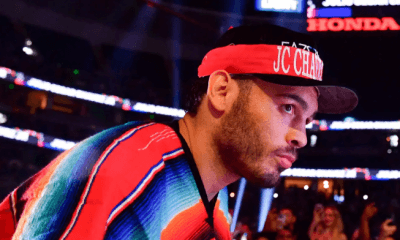
 Featured Articles4 weeks ago
Featured Articles4 weeks agoFrom a Sympathetic Figure to a Pariah: The Travails of Julio Cesar Chavez Jr
-
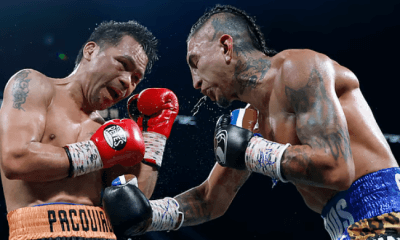
 Featured Articles2 weeks ago
Featured Articles2 weeks agoManny Pacquiao and Mario Barrios Fight to a Draw; Fundora stops Tim Tszyu
-
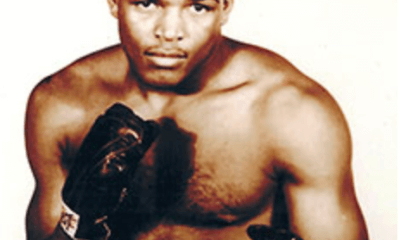
 Featured Articles3 weeks ago
Featured Articles3 weeks agoPhiladelphia Welterweight Gil Turner, a Phenom, Now Rests in an Unmarked Grave
-
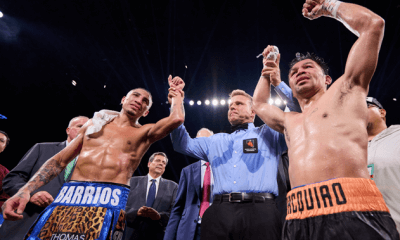
 Featured Articles2 weeks ago
Featured Articles2 weeks agoArne’s Almanac: Pacquiao-Barrios Redux
-
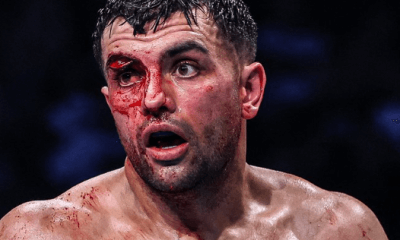
 Featured Articles4 weeks ago
Featured Articles4 weeks agoCatterall vs Eubank Ends Prematurely; Catterall Wins a Technical Decision

















